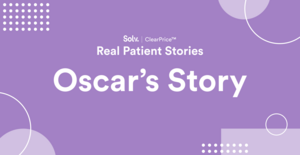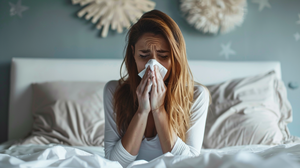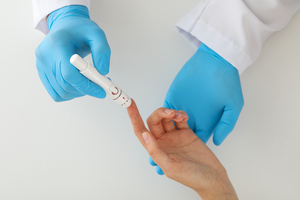Acne Facials
Which facial works best for my acne?
Acne facials are usually performed by skin care specialists and dermatologists. According to Evergreen Beauty College, a skin care specialist will know exactly which type of acne facial treatment you may need to clear up your acne. The best way to determine which facial may work best for your acne is to have an in-person consultation with a dermatologist or skin care provider.
When to consider acne facials
You may want to consider an acne facial if you have had acne for several months or years and have already tried various over-the-counter acne products and cleansing regimens. You may also want to consider an acne facial if acne medications prescribed by your doctor haven't been effective at clearing your skin.
Treatment based on severity
Acne facials may be used to treat any degree of acne. The type of acne facial you receive will depend on the type and severity of your acne. For example, according to the National Institutes of Health (NIH), acne facials that contain the active ingredient benzoyl peroxide are ideal for mild to moderate acne. Facials for acne that contain azelaic acid may be most effective for severe acne, adds the NIH.
Types of facials typically used for acne
Dermatologists typically offer a wide variety of facials for people with acne. Common facials for acne include classic, decongesting, microdermabrasion, LED, brightening, and enzyme facials, according to the NIH.
Classic
A classic facial helps cleanse, moisturize, and exfoliate your skin, reports the Minnesota School of Cosmetology. It may also involve the extraction of blackheads and whiteheads. Cleansing helps remove dirt and oil contributing to acne, while exfoliation removes dead skin cells that may be clogging your pores.
Decongesting
A decongesting facial, such as a chemical peel, can help remove dead skin cells and other debris clogging your pores. According to Florida Academy, a facial that decongests the skin may also reduce the appearance of wrinkles, age spots, and scarring.
Microdermabrasion
Microdermabrasion involves a handheld device with a crystal tip that helps exfoliate the skin. According to the Minnesota School of Cosmetology, microdermabrasion can lighten acne scars and remove age spots. Florida Academy adds that it can brighten dull skin and leave your skin feeling softer and smoother.
LED
LED facials can help reduce inflammation and calm the pores, reports the Minnesota School of Cosmetology. This acne facial involves exposing your face to different types of lighting that minimize blemishes like acne. The NIH adds that light-based therapy resolves acne faster than many other treatments and is ideal for mild to moderate inflammatory acne.
Brightening
Many brightening facials contain antioxidants like vitamin C that help clear your skin to make it look more vibrant. According to Baylor College of Medicine, vitamin C can reduce signs of aging and inflammation, resolve discoloration, and lighten hyperpigmentation that is caused by acne.
Enzyme
Many facials and chemical peels contain enzymes that help turn over dead skin cells and regenerate new skin cells. This can help remove layers of dead skin and other debris contributing to acne. According to Cinta Aveda Institute, the fruit enzymes in light chemical peels are effective at treating mild acne scars.
How to find an acne facial provider
Type "facials for acne near me" into your search engine to find a local dermatologist who offers this service. Or, use Solv to browse acne facial providers in your area. Solv features only the highest-rated providers, so you can access quality treatment from one convenient source.
What to expect at your appointment
Your dermatologist or skin care doctor can talk to you in greater detail about what to expect during your appointment based on the type of facial you receive.
Before
The first stage of acne facial treatment is an assessment with your dermatologist. According to the Minnesota School of Cosmetology, an assessment helps your doctor determine which treatment will be most appropriate for you based on your acne and skin condition. Your doctor may also ask you about other acne treatments you have tried in the past and how long you have had acne.
During
A facial usually begins with cleansing your skin, followed by exfoliation using topical products or handheld devices like those used in microdermabrasion. These processes may then be followed with a facial massage and the application of a facial mask, reports Pivot Point Academy. Your dermatologist can tell you more about what to expect during your appointment based on the type of acne facial you receive.
After
After an acne facial, your dermatologist will give you tips on how to care for your skin and prolong the results of your treatment. According to Florida Academy, your dermatologist may recommend avoiding sun exposure, makeup, and exercising for a few days after your appointment.
Potential side effects and risks
Skin irritation, redness, dryness, burning, and peeling are common side effects of acne facial treatment, reports the NIH. It adds that some treatments produce fewer side effects than others, such as LED light therapy. Your dermatologist can tell you more about potential side effects and risks based on the type of treatment you receive.
Aftercare and maintenance
Caring for your skin after an acne facial can often help prolong your results and reduce your risk for side effects. Your dermatologist will give you specific instructions on how to care for your skin following an acne facial.
If you want to DIY
Over-the-counter acne facials usually come with detailed instructions that tell you how to do these treatments to achieve the best results. Evergreen Beauty College suggests creating a yogurt mask by mixing plain yogurt with a teaspoon of honey, then heating it up on the stove. It says you can apply this mixture to your face and leave it on for 20 minutes to benefit from smooth, radiant, and oil-free skin.
Your dermatologist can give you other tips on how to do a facial for pimples at home.
Results and outlook
Final results from an acne facial will often depend on the severity of your acne, the type of facial you choose, and how well you follow aftercare instructions provided by your dermatologist, notes the NIH. Your dermatologist can give you more realistic expectations about what an acne facial can and cannot do for your skin.
Find Acne Facials near you
- Alabama
- Alaska
- Arizona
- Arkansas
- California
- Colorado
- Connecticut
- Delaware
- Florida
- Georgia
- Hawaii
- Idaho
- Illinois
- Indiana
- Iowa
- Kansas
- Kentucky
- Louisiana
- Maine
- Maryland
- Massachusetts
- Michigan
- Minnesota
- Mississippi
- Missouri
- Montana
- Nebraska
- Nevada
- New Hampshire
- New Jersey
- New Mexico
- New York
- North Carolina
- North Dakota
- Ohio
- Oklahoma
- Oregon
- Pennsylvania
- Rhode Island
- South Carolina
- South Dakota
- Tennessee
- Texas
- Utah
- Vermont
- Virginia
- Washington
- Washington DC
- West Virginia
- Wisconsin
- Wyoming
Acne Facials FAQs
Will a facial help acne?
A facial may help reduce your acne and scarring and improve your skin's tone, texture, and overall appearance. Each type of acne facial produces unique benefits based on its ingredients and the application method used, reports the NIH. Your dermatologist can talk to you in greater detail about whether an acne facial can benefit your skin condition.
What type of facial is best for acne?
The best type of facial for treating acne is a facial that addresses your unique skin concerns and the degree of your acne. For instance, the NIH recommends acne facials that contain azelaic acid for people with severe acne. Florida Academy adds that the best facials for acne will cleanse the skin, promote good blood circulation, and open up pores.
How important is washing my face?
If you have acne, you should wash your face twice a day or after sweating to remove dirt, oil, and dead skin cells, recommends Texas A&M Health. This can help prevent pores from becoming clogged and contributing to acne. Texas A&M Health also recommends drinking lots of water and eating nutritious foods to reduce acne.
Does makeup impact acne?
Certain brands of makeup contain ingredients that can clog pores to cause acne. Wearing heavy layers of makeup may also cause acne, says Baylor College of Medicine. It recommends avoiding makeup that contains cyclopentasiloxane and isopropyl myristate and looking for makeup products that contain glycerin and sunscreen that can moisturize and protect the skin.
Does what I eat affect my acne?
Certain foods like sweets and dairy products can upset your hormonal balance to increase the risk of acne. Still, healthy foods like fruits and vegetables can brighten your skin and prevent acne, reports the New York Institute of Beauty. Other foods that can prevent acne include eggs, salmon, spinach, navy beans, and flaxseeds.
When should I see a dermatologist for acne?
You may consider seeing a dermatologist for acne if you have had it for several months or years and have tried various acne treatments, including medications and over-the-counter products, notes the NIH. Seeing a dermatologist for acne is also a good idea if you are unhappy with your appearance and want to discuss treatments that can reduce the appearance of both acne and scarring.
Where can I get a facial for acne near me?
Type "dermatologist near me" into your search engine, or visit Solv to access a directory of top-rated dermatologists and skin care doctors in your area. Solv gives you the ability to book a same-day or next-day appointment directly from its website so you can avoid the hassle of contacting healthcare providers separately to learn about their services.
Solv has strict sourcing guidelines and relies on peer-reviewed studies, academic research institutions, and medical associations. We avoid using tertiary references.
Everyday Healthcare, Simplified
Expert advice to help you live your best life








